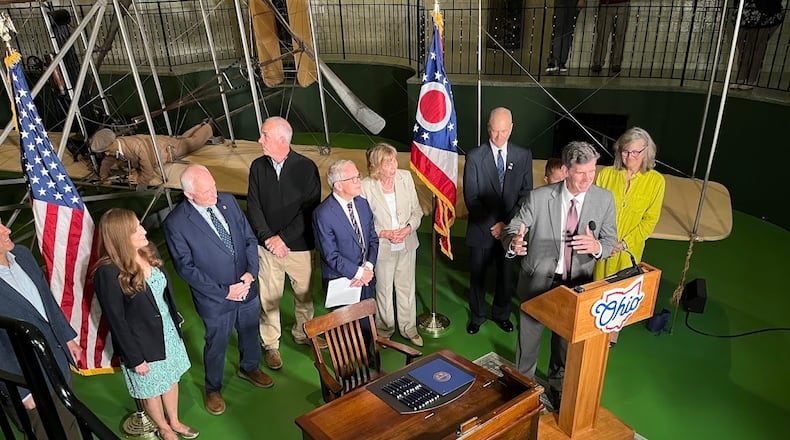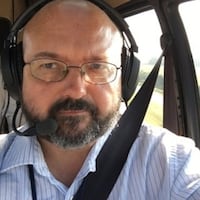Also watching was Rehn Wright Banhos, Amanda Wright Lane’s grandson and a Columbus-area fourth grader.
The Wright Flyer III, comprised of 80% original components, is the only airplane designated a national historic landmark and “is considered an engineering landmark, as well,” said Brady Kress, president and chief executive of Dayton History.
Orville Wright first flew the plane in June 1905. The Wrights used the plane to learn aerial maneuvers above Greene County’s Huffman Prairie that year before ultimately restoring it for display in 1950 at Carillon Park, according to the American Society of Mechanical Engineers.
“The plane behind us all is considered the world’s first practical airplane,” Kress said. “That’s what Orville Wright called it.”
Orville Wright wanted Wright Hall built so that the plane was held in a pit, giving onlookers a chance to see it from above.
“The only way to really understand how it flies is to look down on it,” Kress said. “So you have the best seats in the house.”
The very first Wright Flyer became part of the Smithsonian Institution‘s collection in 1948. It is on display today in Washington, D.C. in the National Air and Space Museum. A 1909 Wright Military flier replica can be found at the National Museum of the U.S. Air Force
In his remarks, DeWine emphasized that the Wrights perfected flying in Dayton and above Huffman Prairie.
“I hate it to break it to our friends in North Carolina,” DeWine said to laughter. “God love them. They had great wind and they had great sand. But for the Wright Brothers, we know it worked out very very well.
State Sen. Steve Huffman, R-Tipp City, described himself as an enthusiastic co-sponsor of the bill. He quipped that the next step was to get a representation of the plane on the state’s great seal.
“The Wright Brothers don’t just belong to us,” said State Sen. Terry Johnson, R-McDermott, who introduced the bill. “They belong to America.”
About the Author



